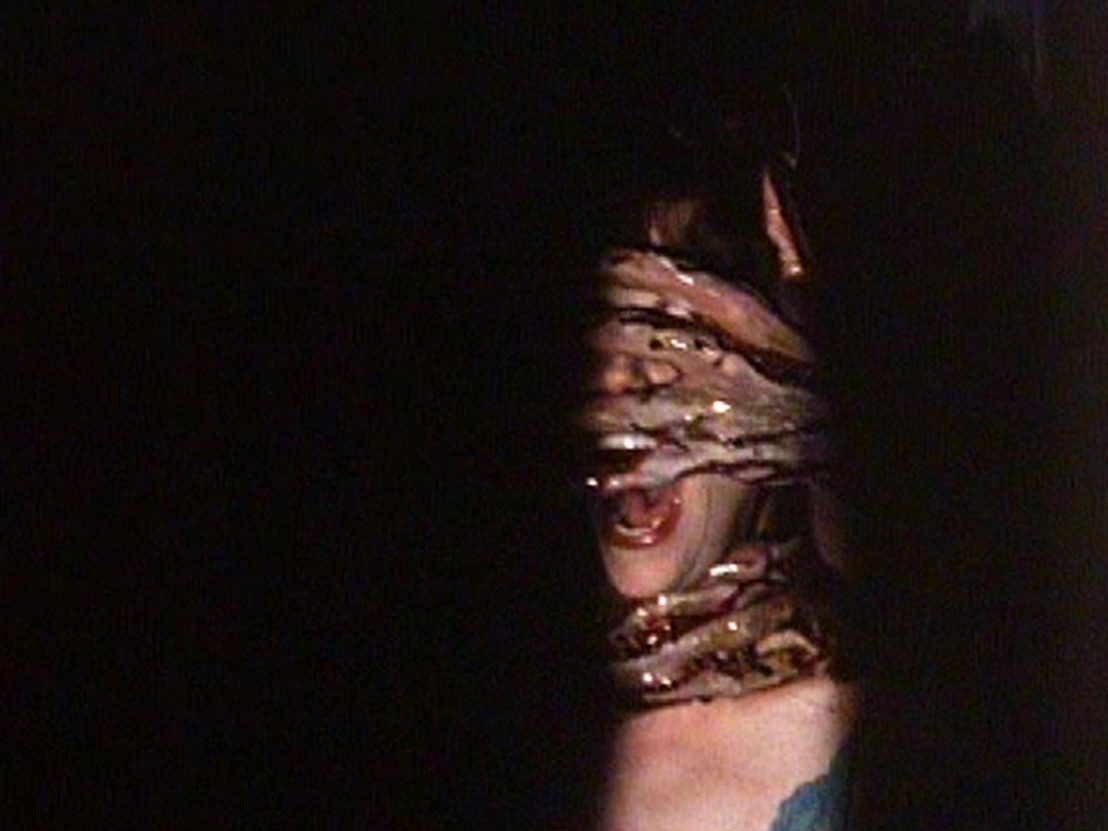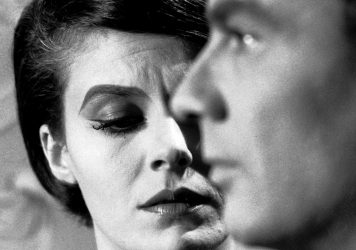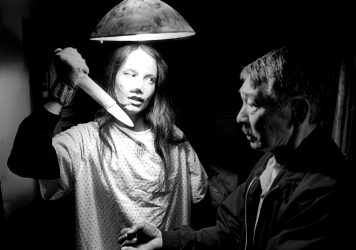
Although the hermetic, circular events of Alain Resnais’ Last Year at Marienbad took place in and around a baroque château lost in time, Adolfo Bioy Casares’ 1940 SF novel ‘The Invention of Morel’, which inspired Alain Robbe-Grillet’s screenplay for Marienbad, was set instead on an island. The same is true of JS Cardone’s The Slayer (aka Nightmare Island), released two years after another Marienbad-influenced horror film, Stanley Kubrick’s The Shining.
As its characters are picked off one by one and the viewer is kept guessing as to who is responsible for the murders, The Slayer formally presents itself as that lowest of horror forms, the by-numbers slasher, and its inclusion, until 1985, on the Director of Public Prosecutions’ list of ‘video nasties’ hardly helps bolster any claim that the film might have to being considered high art. Yet with its delirious confusion of reality with dreams, paintings and cinema, and its outright refusal to unpick for the viewer the ambiguities that it has so carefully crafted, this film’s insular world of entrapment is far closer to the environs of Marienbad than to any Crystal Lake, Camp Blackfoot or Sorority Row.
Location is crucial in The Slayer. “It’s this place,” says Kay Church (Sarah Kendall), “it makes my skin crawl.” Kay is talking about the off-season, wind-swept and (mostly) abandoned Atlantic island to which she, her husband David (Alan McRae), her brother Eric (Frederick Flynn) and Eric’s wife Brooke (Carol Kottenbrook) have come for a week’s vacation, hopefully so that Kay, a sensitive, stressed-out artist, can relax a little before a coming exhibition. Recently her landscape paintings, inspired by her dreams, have taken a dark, surrealist turn – and now that she is on the island, she insists anxiously that she has not only seen its barren locations (a derelict cinema, the house where they are staying, the adjacent boathouse) before in a dream, but also depicted their exact likeness in her recent art, despite never having previously set foot on the island.
David is having none of this: “It’s not this place, Kay, for Christ’s sake! It’s those damn dreams of yours! I sometimes, honest to God, think you’re slipping right over the edge.” There is the rub: we too find ourselves split between these two perspectives – one intuitive, one rationalist – and uncertain where the truth lies, since what is happening on the island does not easily reduce itself to any straightforward, literal reading.
What we do know is that whenever Kay is asleep and dreaming that one of her companions is being brutally murdered by a monstrous presence, the same happens – simultaneously – in real life. Whether this is a case of pure coincidence, a nightmare in a damaged brain, or something genuinely supernatural, is left for us to unravel in our own theatre of the mind. A coda, returning us to a primal scene from Kay’s childhood, serves if anything only to muddy further all those grey waters.
Much as Kay’s recurrent dream is also a premonition, The Slayer itself is often cited as a precursor to Wes Craven’s A Nightmare on Elm Street, where too a female protagonist struggles to stay awake so as to repress the vindictive bogeyman of her dreams. It is still, though, with its recurrent scenarios, uncanny déjà vus and unresolved mysteries, much nearer Marienbad than America’s suburbia.
Since the film ends at its beginning, it is perhaps not entirely unsuitable for this piece to end somewhere in the film’s middle, with a scene that lays out several different layers of meaning. As Eric, Brooke and Kay search the island for the missing David, whose decapitation – or at least Kay’s dream thereof – we saw the previous night, Kay wanders into the island’s disused theatre. Hearing a sound above, she climbs the staircase, the hooked shadow of her hand momentarily visible on the wall in imitation of the most famous expressionist sequence from FW Murnau’s Nosferatu.
There is a strange echo effect here, as Kay is suddenly assimilated to one of cinema’s oldest monsters – dwelling in the dark, dissolved by the light – inside an actual ancient cinema (that province of shadows on the wall). Yet Kay is not ascending, in this hall of mirrors, to her next victim, but rather to the projectionist’s booth. She finds nothing in the theatre – apart from David’s headless corpse – but then, in The Slayer, perhaps the monster never is anything more than a projection.
The Slayer is released by Arrow in Dual Format Blu-ray/DVD on 21 August, 2017.
Published 21 Aug 2017

By Thomas Hobbs
The director’s satirical 1994 horror explores what happens when society embraces its worst monsters.

By Anton Bitel
Alain Resnais’ 1961 classic is as elegant in its symmetries as it is perplexing in its paradoxes.

By Anton Bitel
Ovidio G Assonitis’ Madhouse similarly concerns a damaged woman’s psychotic meltdown.